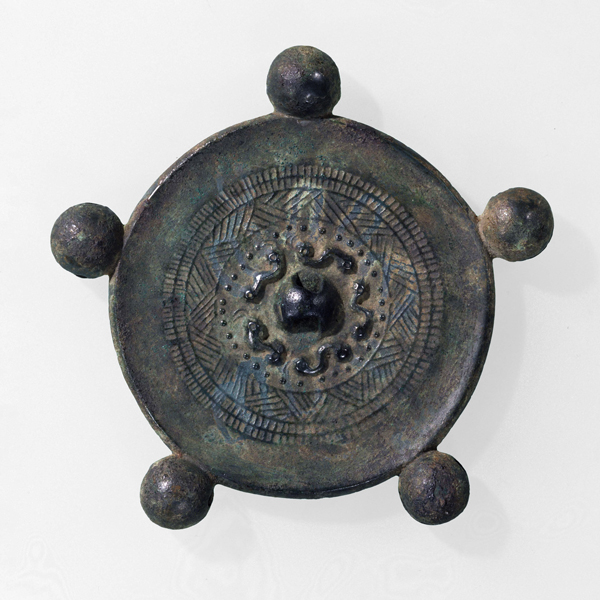The Rise of Provincial Clans and the Development of a Unique Culture
-

Mirror with Five Bells
Excavated at Showa-mura, Tone-gun, Gunma, Kofun period, 5th-6th centuryJapanese Archaeology and Special Exhibition (Heiseikan) Japanese Archaeology Gallery
June 4, 2024 (Tue) - November 4, 2024 (Mon)Local production of weapons, armor, and horse tack, which had originally been brought from Korea, began around the end of the 5th century. While gold and silver were often used in Korea, production in Japan was characterized by the extensive use of gilded bronze plates. From around the mid-6th century, unique metal objects such as large ornamental swords were also created. It is believed that these objects were distributed to provincial clans as proof of the Yamato Kingdom’s authority and as signs of an alliance.
| Designation | Name | Creation/ Excavation/ Provenance |
Period | Acquisition/ Ownership/ Accession Number |
CMT | ||
| Highlight | Mirror with Five Bells | Excavated at Showa-mura, Tone-gun, Gunma | Kofun period, 5th-6th century | J-13280 | |||
| Highlight | Part of Saddle Fittings | Found at the Ashikaga Kōenroku Tumulus, Tochigi | Kofun period, 6th–7th century | Gift of Mr. Ogawa Kōzaburō, J-8201 | |||
| Highlight | Important Art Object | Pommel with Silver Inlay | From Hongo, Fujioka-shi, Gunma | Kofun period, 6th century | J-36747 |
